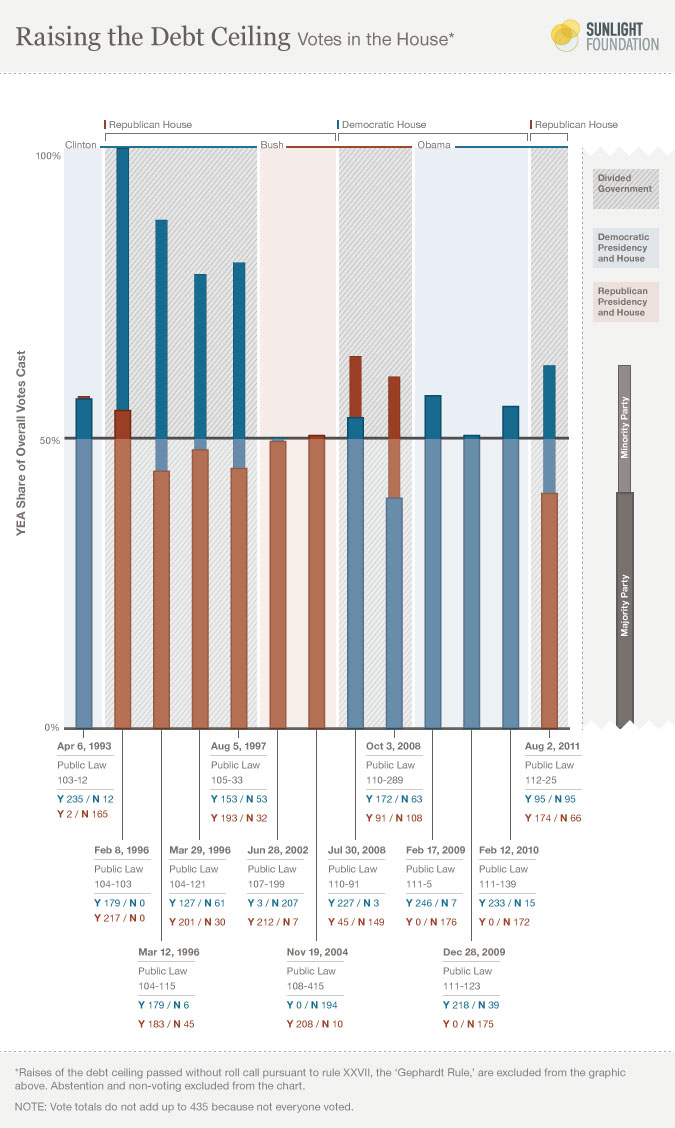How the Parties Flip-Flopped on the Debt Ceiling
Because of some the work we’ve done before on last minute negotiations and divided government, Sunlight prepared the following graphic that visualizes the recent history of US House votes on the debt ceiling, based on public voting records and a CRS report. The bars indicate the “yea” votes.
We’ll have more commentary forthcoming, but here are a few initial thoughts on what this graphic makes clear:
- Opposition to raising the debt ceiling is often partisan, with opposition coming from either party, based on who is in the White House. Many House Republicans have voted for raising the ceiling, just as President Obama voted against it when he was a Senator.
- Divided government has necessitated support from both parties to raise the limit.
- There is a significant untold story about the Gephardt Rule, a House Rule which enabled the limit to be raised with little public record. The role this rule played in setting up the current showdowns has been insufficiently examined.
- Good access to congressional data and reports enables this kind of analysis; it could be improved.
- Each of these votes was a predictable consequence of budgets that were passed before them, demonstrating another facet of political hypocrisy.
Daniel Schuman, Zander Furnas, Caitlin Weber and Matt Rumsey contributed to this post.


